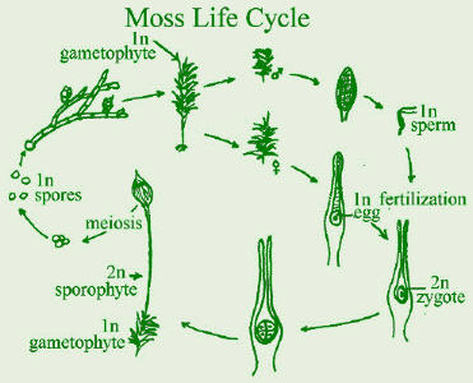Classification(1):
- Genus name Dicranum- 2 forked teeth around the mouth of the capsule
- Species name Polysetum- several slender stalks (with spore capsules) per branch
Natural History (1):
- Light green to yellow green
- Grows 7cm tall or more
- Covers large areas of the ground, stems are covered with whitish matted rhizoids
- Leaves: up to 1 cm long, spread more of less at right angles from the stem, edges wavy
- Habitat: soil, rocks, decaying wood and humus in open, dry to moist forest, common and locally abundant (particularly in pine woods), across Northwestern Ontario's boreal forest North and West to interior Alaska
Reproduction (1):
- Sporophytes: 1-5 stalks per plant, 2-4 cm long, capsules are 2-4 mm long, inclined or horizontal, curved
- Males plants have been reduced to tiny buds on the leaves of female plants
Conservation Status (5):
- NatureServe conservation status is G5 or Secure (common, widespread, abundant, and lacking major threats or long-term concerns)
Interesting Facts(1):
- Species called "electric eels" because the wavy leaves resemble miniature eels

